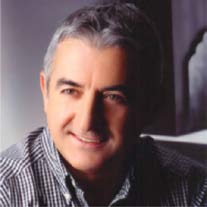ELECTROMAGNETIC DIFFRACTION MODELING AND SIMULATION
EM diffraction is critical in many applications including antennas and propagation. Understanding and visualizing EM wave – object interaction is crucial in designing new antenna systems, in predicting path losses through complex propagation paths, etc. In order to do that wave pieces such as diffracted waves, Fringe waves, etc., should first be studied on canonical structures. Then, complex objects can be investigated by using HFA as well as numerical methods in hybrid form intelligently.
EM wave scattering from waves – objects interaction has long been investigated. Interesting wave phenomena, diffraction, occur when objects have sharp edges and tips. Methods known as High Frequency Asymptotics, such as Geometric optics (GO), Physical Optics, (PO), Geometrical Theory of Diffraction, (GTD), Uniform Theory of Diffraction (UTD), Physical Theory of Diffraction (PTD) and Theory of Edge Diffraction (TED) have been successfully applied to variety of EM problems. Recently, numerical methods, such as Finite Difference Time Domain (FDTD), Method of Moments (MoM) and Finite Element Method (FEM) have also been used in modeling EM diffraction. These powerful methods, together with novel approaches, have shown to be successful not only in modeling EM diffraction but also in distinguishing wave pieces such as scattered waves, diffracted waves, Fringe waves, etc., which is very important in visualizing and understanding complex wave – object interaction.
This seminar will review all these approaches, use recently developed EM virtual tools and present comparisons through canonical examples.
Date and Time
Location
Hosts
Registration
-
 Add Event to Calendar
Add Event to Calendar
- 154 Summit Street, Newark, NJ 07102
- NJIT
- Newark, New Jersey
- United States 07102
- Building: ECEC
- Room Number: 202
- Click here for Map
- Contact Event Host
-
Dr. Ajay K. Poddar, Ph.: 201-560-3806, email:akpoddar@ieee.org
Dr. Durga Misra, +1-973-596-5739, email: dmisra@ieee.org
Dr. Edip Niver, email: edip.niver@njit.edu
- Co-sponsored by AP01/MTT17 & ED/CAS
Speakers
 Dr. Levent Sevgi of OKAN University, Engineering Faculty, Tuzla – İSTANBUL
Dr. Levent Sevgi of OKAN University, Engineering Faculty, Tuzla – İSTANBUL
ELECTROMAGNETIC DIFFRACTION MODELING AND SIMULATION
Biography:
Prof. Sevgi Born in Akhisar / Turkey on 1st January 1958.
He received his BsEE, MsEE and PhD degrees in Electronic Engineering from Istanbul Technical University (ITU) in 1982, 1984 and 1990, respectively. In 1987, while working on his PhD, he was awarded a fellowship that allowed him to work with Prof. L. B. Felsen at Weber Research Institute / New York Polytechnic University York for two years. His work at the Polytechnic concerned the propagation phenomena in non-homogeneous open and closed waveguides.
He was with Istanbul Technical University (1991–1998), TUBITAK-MRC, Information Technologies Research Institute (1999–2000), Weber Research Institute/Polytechnic University in New York / USA (1988–1990), Scientific Research Group of Raytheon Systems, Canada (1998 – 1999), Center for Defense Studies, ITUV-SAM (1993 –1998 and 2000–2002) and with University of Massachusetts, Lowell (UML) MA/USA as a full-time faculty (2012 – 2013) and with Doğuş University (2001-2014). Since Sep 2014, he has been with Okan University.
He has been involved with complex electromagnetic problems and complex communication and radar systems for nearly three decades. His research study has focused on propagation in complex environments, analytical and numerical methods in electromagnetic, EMC/EMI modeling and measurement, communication, radar and integrated surveillance systems, surface wave HF radars, FDTD, TLM, FEM, SSPE, and MoM techniques and their applications, RCS modeling, bio-electromagnetics. He is also interested in novel approaches in engineering education, teaching electromagnetics via virtual tools. He also teaches popular science lectures such as Science, Technology and Society.
He is a Fellow member of the IEEE, an AdCom member of the IEEE Antennas and Propagation Society (2013-2015), the writer/editor of the “Testing ourselves” Column in the IEEE Antennas and Propagation Magazine (since Feb 2007) and a member of the IEEE Antennas and Propagation Society Education Committee (since Jun 2006). He is also a member of several editorial boards (EB), such as the IEEE Antennas and Propagation Magazine (since 2007), the IEEE Access (2017-2019), Wiley’s International Journal of RFMiCAE (since 2002), etc.
He has published many books/book chapters in English and Turkish, nearly 180 journal/magazine papers/tutorials and attended nearly 100 international conferences/symposiums.
He has three books Complex Electromagnetic Problems and Numerical Simulation Approaches (IEEE Press & Wiley, 2003), Electromagnetic Modeling and Simulation (IEEE Press & Wiley, 2014) and A Practical Guide to EMC Engineering (ARTECH House, 2017). His fourth book Radiowave Wave Propagation and Parabolic Equation Modeling (with Gökhan Apaydın) is being published by the IEEE Press & Wiley and will be on the Market before October 2017.
Email:
Address:Electrical – Electronics Engineering Department, OKAN University, Engineering Faculty, Tuzla – İSTANBUL, Türkiye
Agenda
Event Time:2:00P M to 4:00 PM
2:00:00 PM - Refreshments and Networking
2:00PM-4:00 PM: Talk by Prof. Levent Sevgi, OKAN University, Engineering Faculty, Tuzla – İSTANBUL
Seminar in ECE 202 All Welcome: There is no fee/charge for attending IEEE technical semiar. You don't have to be an IEEE Member to attend. Refreshmen is free for all attendess. Please invite your friends and colleagues to take advantages of this Invited Distinguished Lecture.
